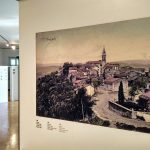As Glas Istre/Andjelo Dagostin writes on the 30th of September, 2019, the tourists Istria wants to attract typically want to eat locally, authentically, they want the experience and not just the food, because they can get international food everywhere in the world.
Although the Educational Gastronomic Centre of Istria, located near Pazin, has so far been less widely known, the fact remains that their numerous cooking workshops (115 of them) have been attended by more than 1,200 students over the past four years, mainly by local chefs from Istria, as well as hospitality workers and hoteliers.
Glas Istre sat down and talked to Edmond Šuran, head of the Centre for Rural Entrepreneurship Development, who had a lot to say.
Everything starts from the point of agriculture and the task of our agency was to put a spring back in the step of Istria’s agriculture workers. We used this to use gastronomy as a superior tool for the additional valorisation of local products, because from the experience we had with Istrian cattle, the biggest shift happened when the meat ended up in the hands of the chef.
At the first moment, it was mostly agritourism and taverns, and very soon after, restaurants and hotels with 4 or 5 stars, and now these are already Michelin-starred restaurants that want to have Boškarin (type of cattle) on offer, which is great.
All of this was created at AZRRI, and through gastronomy it was then placed on the market. That was a trend at the time, but today, that’s almost a type of gastronomic brand, says Šuran, adding that 80 to 90 hospitality establishments currently offer Istrian beef, and restaurants in Primorje, Zagreb, Slovenia and even across the Adriatic in Italy also offer it. They want to achieve the same with the meat of the Istrian donkey, which is currently being offered in a dozen restaurants across Istria.
”At the moment, the demand for Istrian donkey meat is growing, and quite quickly, even those who raise it aren’t managing to meet the needs of the market,” continued Šuran, adding that the goal is to achieve such an impressive level of valorisation with other Istrian products, including media promotion.
At AZRRI, they listen to the needs of Istria’s chefs and others, but also the mentor-lecturers who are constantly interacting with the chefs. Due to the relative limitations of the top culinary staff in the peninsula, AZRRI has not limited itself solely to Istria, so they invite excellent chefs with new ideas from all over Croatia and even from abroad. The cooking workshops are attended by established chefs with experience who are looking for inspiration, but also younger chefs with whom much work is being done to accelerate culinary techniques.
”We must not forget that in the best restaurants, the dish is presented not only by the waiter, but very often by the chef, precisely because he’s familiar with the primary food, whether it’s boar meat, blue fish or mozzarella, so the chef gives that dish its contents, its value, and he can tell the guest the story of the meal and he appreciates what goes into it,” explained Šuran, adding that not all those on Istria’s hospitality scene are expected to position themselves in high gastronomy, but those who do want that will have to interact with the guest.
”We’re especially pleased that many young chefs and caterers are implementing the knowledge they’ve acquired here, using new details and culinary tricks. We see this when we go around the field,” said Šuran, adding that after four years, it’s difficult to maintain the level of innovation in the cooking workshops, but he believes that they still succeed in inviting new chefs every year. So, they are still attracting students who mostly come from Istria, then from many other parts of Croatia, but also from Italy, Slovenia and from down south in Montenegro.
”These chefs also come back to attend new workshops every year, The majority of attendees come from the private hospitality sector, but over the last two years, hoteliers from Istria have also become active, often booking the entire workshop for their employees.
I know that it may be a little harder for hotel companies to implement the knowledge they acquire here, because they have certain business templates and integrated public procurement, but it’s commendable that these chefs still do come and acquire new knowledge, experience, and skills here that can then influence managers to adopt at least a bit of it. And that does happen!” he noted.
He cited the fact that the largest amount of Istrian cattle meat was consumed in one restaurant within a hotel house in Istria, as an example of influence. However, when the head chef left that restaurant, larger quantities of meat were no longer ordered there, but they were then made available in restaurant where that chef had moved.
Make sure to follow our dedicated lifestyle page for much more.








